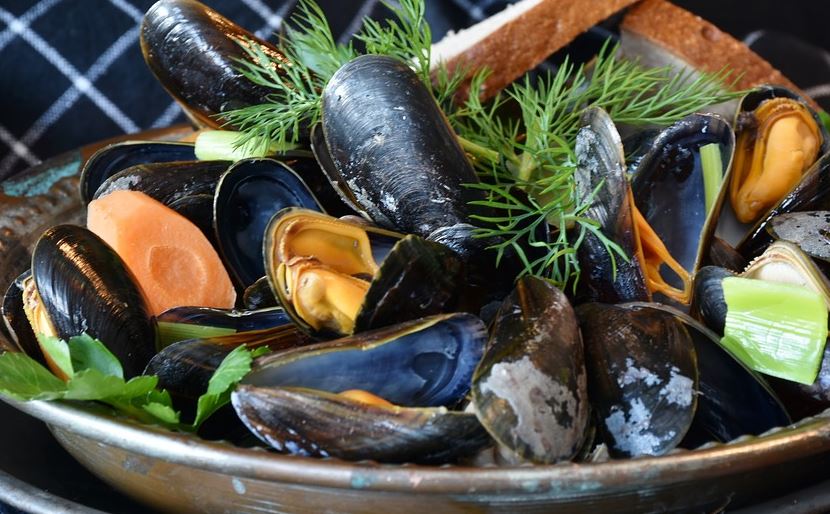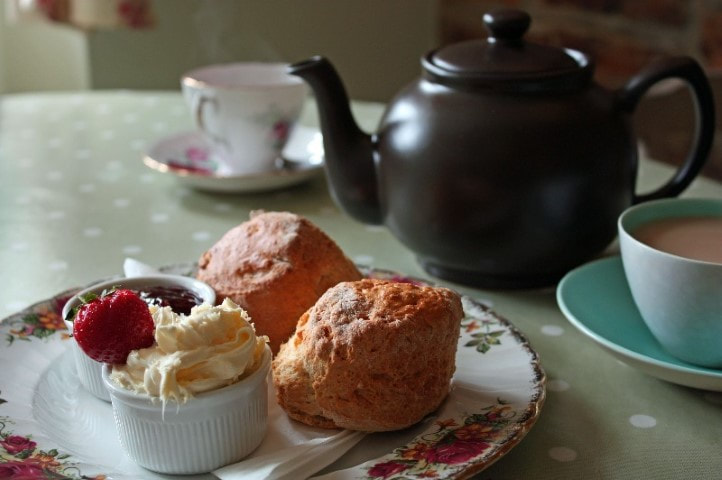Cornwall is becoming a bit of a haven for food fans, with its smorgasbord of seafood and fresh farm produce, but food has always been an important part of Cornish culture. In this post, we picked out 8 of our favourite edible treats from the region. Have we missed your favourite? Let us know in the comments below!

Pasty
Let’s get this one out of the way. We all know about the Cornish pasty. It is an institution in and of itself. For clarity, ‘Cornish pasty’ is a tautology – there is no Devon pasty, no London pasty, no Mexican pasty – the only true pasty is a Cornish one! Traditionally, it should be shortcut pastry, crimped at the side, and generously filled with beef (beef skirt ideally), potato, swede (confusingly known as turnip in some parts of Cornwall) and onion, and generously seasoned. If the mixture is right, then it should be moist and tender.
There are some companies that have successfully exported the ‘Cornish’ pasty nationwide but be warned, these are a pale imitation of the real thing. Flakey thin pastry and machine cut shapes are no substitute for a proper hand-crimped pasty. Of course these days you can go fancy with a Pork and Stilton, Veggie or Chicken Madras, but make no mistake – the original is still the best! If you’re in our area, we can strongly recommend the pasties from Philip Warren Butchers in Launceston – our favourite for miles around.
Cream tea
This is another one we need to tick off. Let’s be fair; the first known mention of something resembling a cream tea is from Tavistock in Devon, but in Cornwall it has become popular enough to call it our own and… dare I say it… we figured out how to eat them correctly. That is, jam first, and then the clotted cream! Cream always goes on top of treats, so we’re just following that principle! But don’t worry – to be honest, we’re in favour of you eating them however you like. If in doubt, put cream on both sides!
The true Cornish way is with a Cornish split – this is a slightly sweet bread roll, much lighter and fluffier than a scone. You can even try ‘Thunder and Lightning’ – clotted cream with honey.
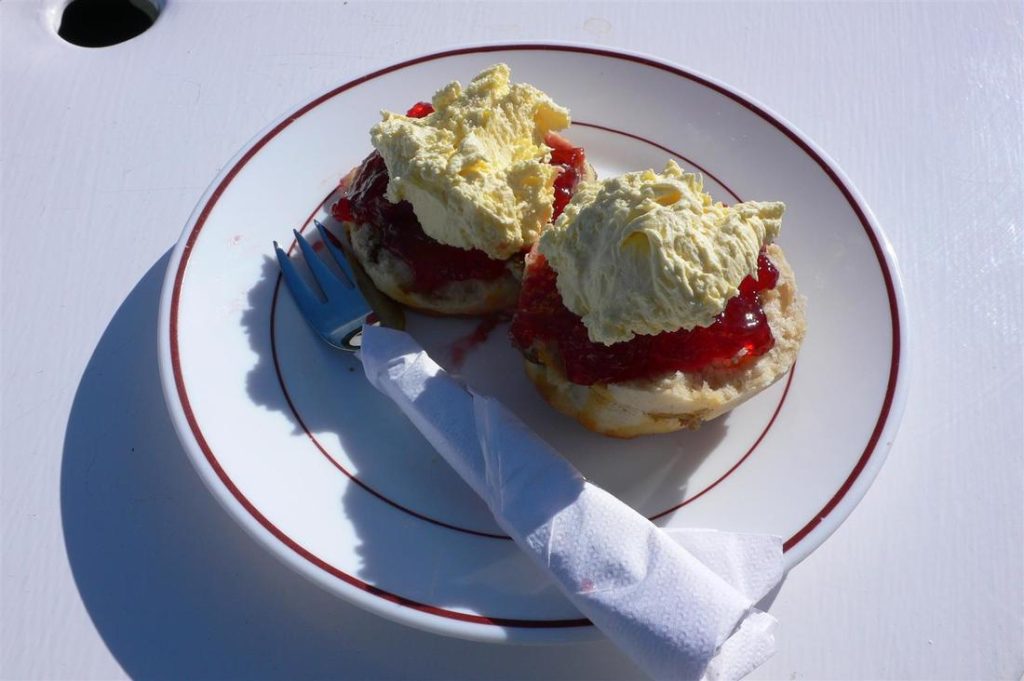
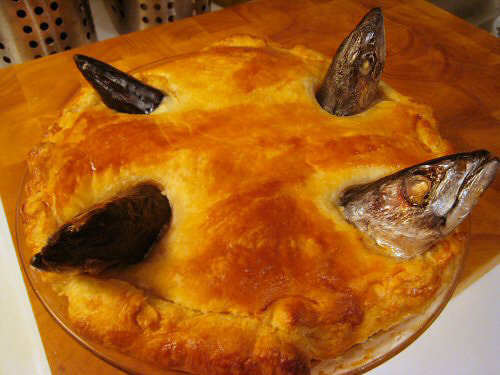
Pilchards and Stargazy Pie
For a period of nearly 200 years, pilchards were a crucial part of the Cornish economy. These fish (basically older sardines) were caught in hundreds of millions every year. ‘Huers’ would stand on clifftops watching for the signs that a shoal were nearby (birds feeding etc), and would should ‘Hevva, hevva!’ (here they are!) to alert the fishermen.
One dish that pilchards have inspired is the very Cornish stargazy pie – the only item on this list that most Cornish people have never tried. Possibly a bit too much for squeamish modern tastes, it is basically a rustic shortcrust fish pie containing whole pilchards (bones removed), their heads poking out of the crust gazing at the stars. These days, it is very hard to find on a menu.
The name pilchard isn’t very glamorous, whereas sardines have had a bit of a comeback, reminding people of Mediterranean holidays. Now you can find pilchards fairly labelled as Cornish sardines in most local fishmongers – fantastic with some salt and pepper and thrown onto a barbecue.
Hevva Cake
Once the fishermen above returned home, tradition tells us that hevva cake (or heavy cake) were baked to celebrate the new catch. More of a shortbread than a cake, this dense delicacy takes many of its characteristics from classic ancient flavours – nutmeg, raisins, citrus peel.
For a special treat, have a chunk of it warmed in the oven and serve with a glug of custard or some Cornish clotted cream! What a treat.
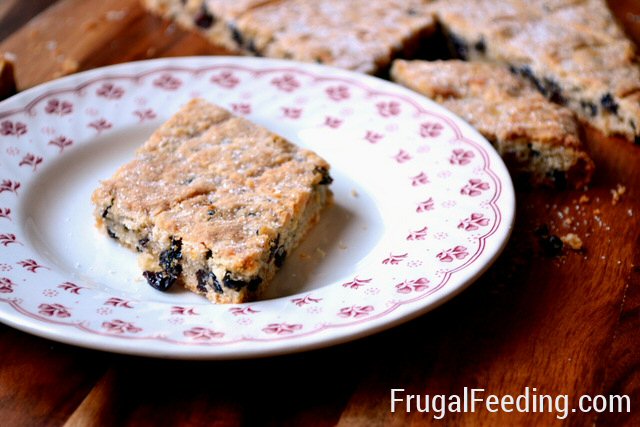
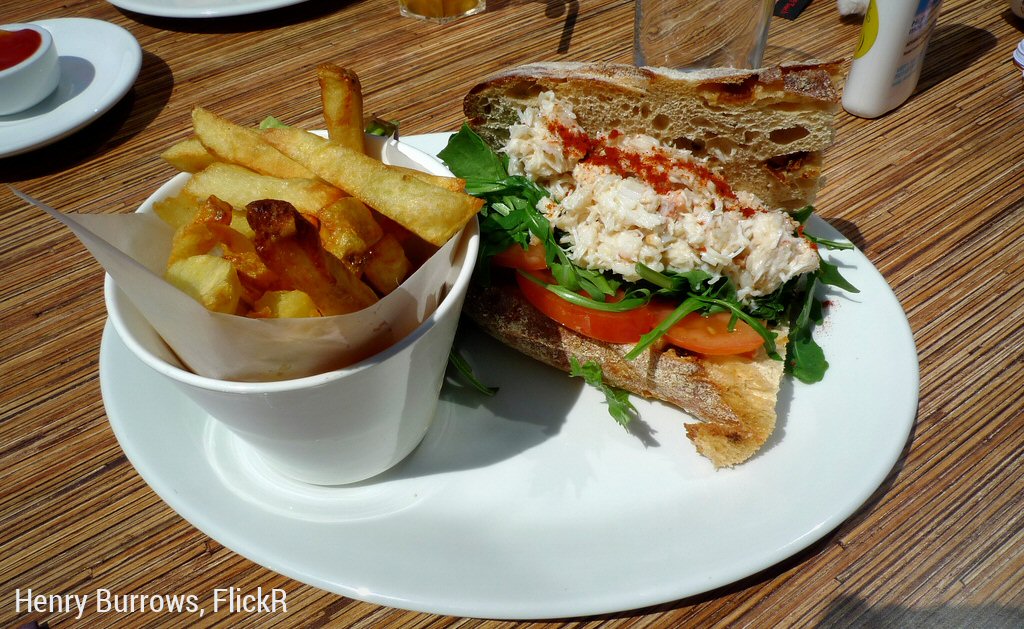
Crab
A world away from frozen crab sticks, proper Cornish crab (especially the famed crabs of Newlyn) is a real treat. Fresh white crabmeat is succulent, slightly sweet, and barely fishy at all, while the darker meat has a stronger but not unpleasant taste.
As simple as it sounds, one of the best ways to enjoy Cornish crab is in a chunky sandwich. Be suspicious of cheap offerings – crab requires careful handpicking which inflates the price, so if it’s too cheap then a frozen substitute may be in place.
Cornish Fairings
The shop bought variety are a reasonable biscuit, but nothing in comparison to the home-made alternative. These sweet ginger biscuits were once packaged with sugared almonds and sold at fairs (pre-Candy floss days).
Crispy, chewy, warm spices, they’re an absolute treat and really easy to make. Have a look at our recipe here.
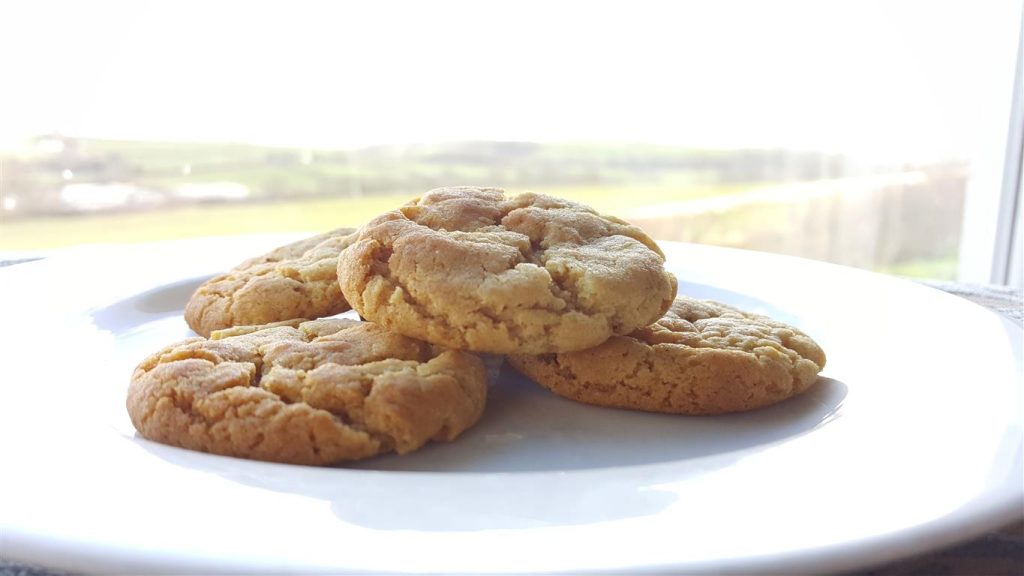
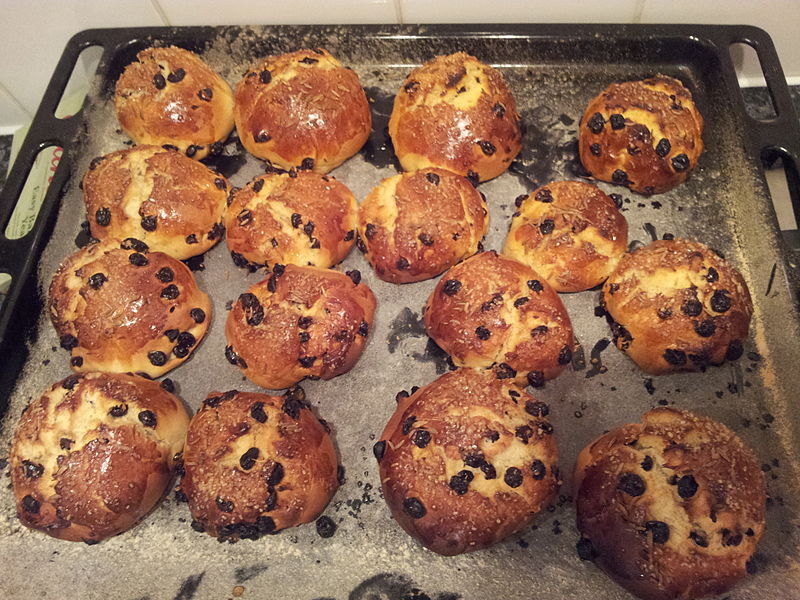
Saffron Buns
OK I admit it. I have a bit of a sweet tooth. It’s strange to think that buns flavoured with saffron, traditionally grown in Asia, have become a staple of Cornish cuisine. Nevertheless, it would be hard to find a Cornish bakery without some form of saffron cake on sale.
These fruited tea cakes don’t just get the subtle hay-like taste from saffron, but also a yellow colour. Absolutely delicious toasted and spread with butter.
Whortleberry pie
Whortleberries, also known as urts in some part of the county, are a wild cousin to the bilberry, and the good news is that the season is just getting going! Once abundant on the heathlands of the region, both over Bodmin moor and on the clifftops, these fresh berries are tangy and sweet and truly wonderful.
Any number of recipes exist for making the most of these little treats, from gins to jams, but our personal favourite has to be a traditional pie. A buttery shortcrust pastry, generously filled, and served with Clotted cream ice-cream. A match made in heaven.
We realise that wild bilberries are found in many parts of the country, and in fact are more plentiful in the North and West, but Cornish bilberries are tastier. Of course.
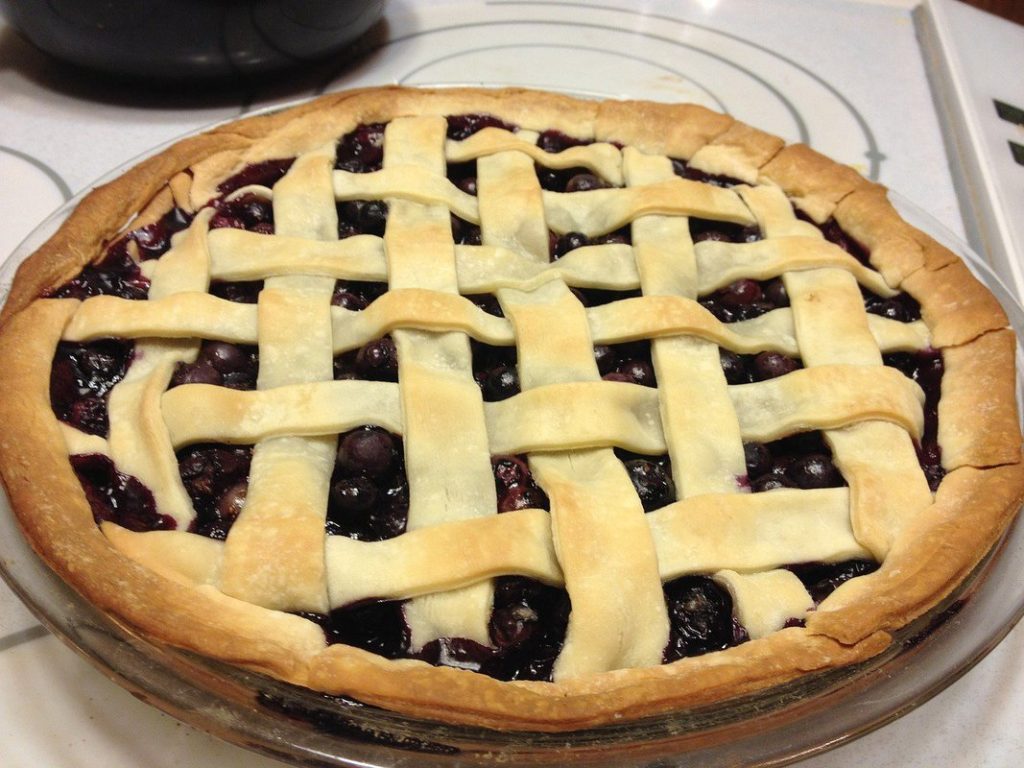
Well that wraps up our 8 Cornish treats to eat – have we missed your favourite? Let us know in the comments below!

